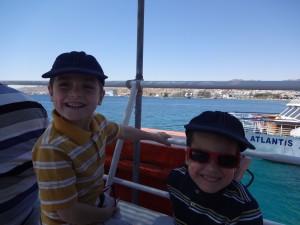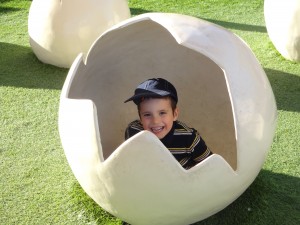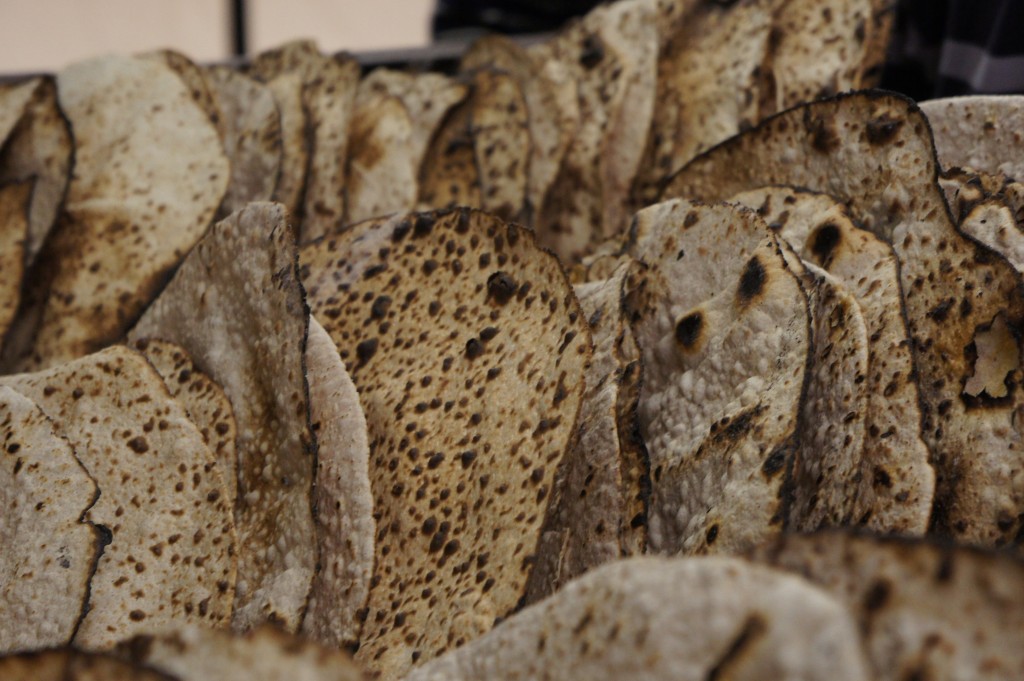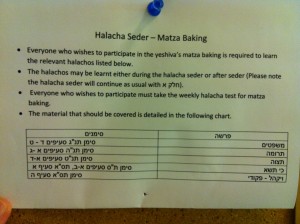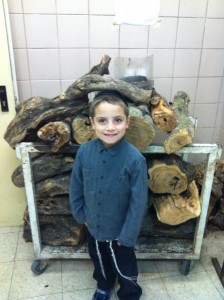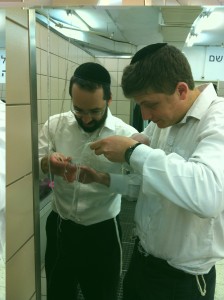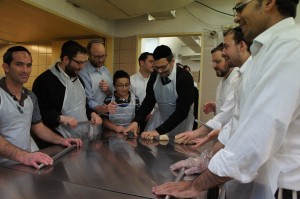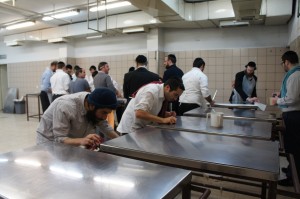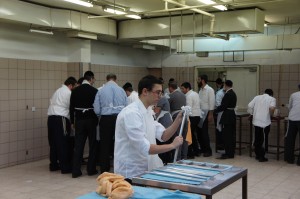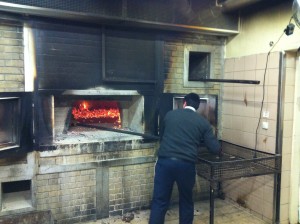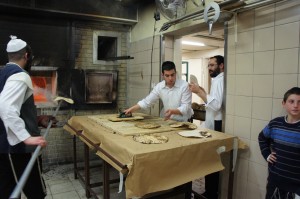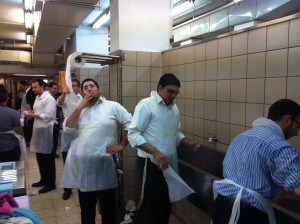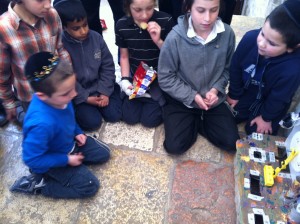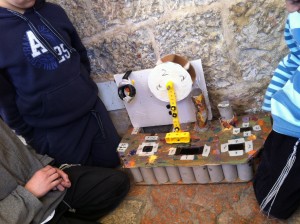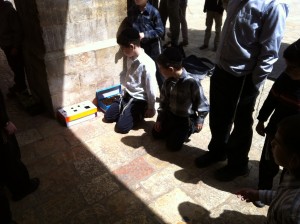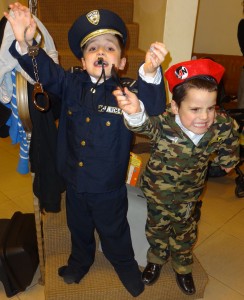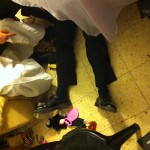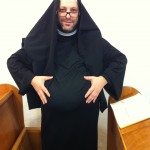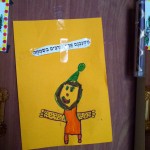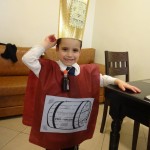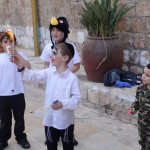Getting ready for Pesach is challenging under any circumstances. You have clean the house thoroughly for chametz, going room-by-room, and then take measures to prevent re-contamination. You have to do a tremendous amount of shopping, essentially re-stocking your food supply in its entirely, since everything has to be certified kosher-for-Pesach and cannot have been opened (for fear that it was contaminated with chametz), not to mention all of the food needed for the holiday (and Shabbos chol hamoed) meals. Oh, and you’ll need candy to give the children for good questions & answers at the seder, which really keeps them interested. All the laundry and dry cleaning needs to get done, because (except for kids’ clothes), you can’t do it even on chol hamoed. This is also a traditional time to get new clothes – in honor of the holiday, and because shopping for other-than-holiday needs also can’t be done on chol hamoed. You’ll also want to get presents (toys and books) for the kids before Pesach. Then there’s all the cooking, which can’t be done until at least part of the kitchen is cleaned and prepped to make it free of chametz.
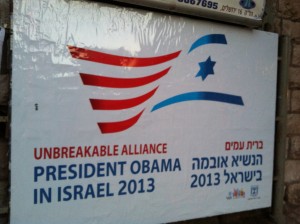
Manifestly unbreakable if it can withstand a pre-Pesach shutdown of Jerusalem.
Here in Jeruslaem, basically the entire city (probably the entire country) is out shopping en masse for the weeks leading up to Pesach. So, of course, this was the perfect time for a street-closing, traffic-jamming, city-paralyzing visit from the President of the United States! To be clear, on the whole, Israelis were and are glad for the trip (and many of his remarks were well-received). But there was a lot of grumbling about the timing. Case in point, I heard a woman on the bus refer sardonically to the upcoming Tuesday as “Yom Slishi, Erev Obama” (“Tuesday, ‘Obama Eve'”).
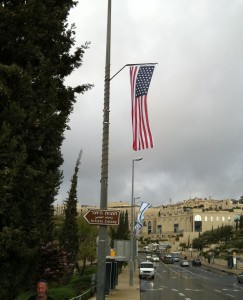 The President steered clear of the Old City, and we planned shopping locations around his visit, so we were largely unaffected. We did come back a bit early from our own ill-timed trip to Eilat (post coming) so that we could return the rental car to our local Hertz, right next to the King David Hotel where Obama stayed, before they closed down the street. The only other evidence of his trip for us were a lot of loud helicopter overflights for those few days. I tried to convince the boys that we were going to invite Obama over, since he’d be glad to hang out with some Chicagoans all the way over here, but they have become wise to my deceptions.
The President steered clear of the Old City, and we planned shopping locations around his visit, so we were largely unaffected. We did come back a bit early from our own ill-timed trip to Eilat (post coming) so that we could return the rental car to our local Hertz, right next to the King David Hotel where Obama stayed, before they closed down the street. The only other evidence of his trip for us were a lot of loud helicopter overflights for those few days. I tried to convince the boys that we were going to invite Obama over, since he’d be glad to hang out with some Chicagoans all the way over here, but they have become wise to my deceptions.
Jonathan Pollard has become a major cause célèbre here, and there were signs all over pushing for his pardon. I really don’t want this blog to get political (and I’m not putting up with any comment wars!) but, FWIW, my thoughts on the topic jibe fairly well with this.
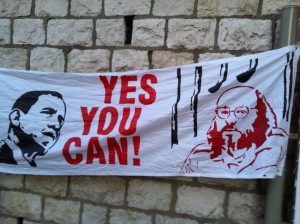

For those of us in the Rova, Pesach preparations were further complicated by a music festival whose timing and necessity were highly questionable. And, to my great amusement, both were indeed questioned in the English version of a notice to Rova residents from the police deparment. The Hebrew side of the notice seemed to play it straight, so I’m assuming that they asked some Anglo Rova resident to do the English version, with this result:
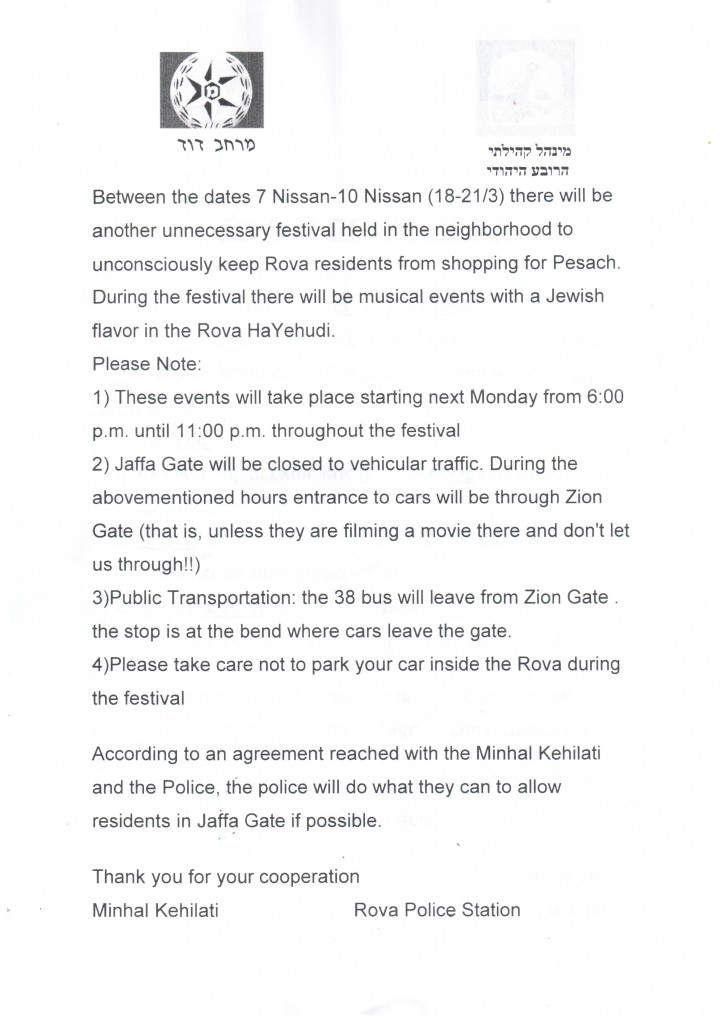
Although we managed to work around these complications, Pesach prep was an intensive experience. Being that this was our only Pesach here, we had no sets of dishes, cookware, or appliances for use on Pesach. We usually go to our cousins in New Jersey for the holiday, so we hadn’t had to do a complete house cleaning, including flipping the kitchen, in years. We also had to learn the ropes in terms of all of the extra kashrus issues there are here in Israel on Pesach.
In fact, Pesach shopping here was far more difficult than in Chicago. Lots of otherwise kosher-for-Pesach products here contain kitniyos (grain-like and legume products that are prohibited during Pesach to Ashkenazic Jews, for reasons described at the link), which Sephardim can eat. Given that half of Israeli Jews (and probably more than half of kosher-keeping Israeli Jews) are Sephardim, I understand the prevalence of kitniyos products. But why in the world do they put kitniyos in products – like macaroons – that no self-respecting Sephardi would eat?
 Even aside from the kitniyos issue, the mehadrin (higher level) hashgachos (kosher supervision/certification) here went crazy for Pesach. For example, on a tremendous number of products under the supervision of the (mehadrin) Eida Charedis, its hashgacha specifically excluded Pesach. This left them under Rabbanut supervision alone, which we don’t rely upon. In a few situations, it seems the reason was a halachic difference of opinion, such as with diet pop, because the Israeli mehadrin hashgacha considers aspartame to be kitniyos while the Rabbanut (and American hashgachos) do not. But there were other situations (like that pictured at right) where the Eida Charedis excluded Pesach, while a different mehadrin hashgacha (here, Chasam Sofer) did certify for Pesach, including that there were no kitniyos. Why the Eida Charedis said “no” is a mystery.
Even aside from the kitniyos issue, the mehadrin (higher level) hashgachos (kosher supervision/certification) here went crazy for Pesach. For example, on a tremendous number of products under the supervision of the (mehadrin) Eida Charedis, its hashgacha specifically excluded Pesach. This left them under Rabbanut supervision alone, which we don’t rely upon. In a few situations, it seems the reason was a halachic difference of opinion, such as with diet pop, because the Israeli mehadrin hashgacha considers aspartame to be kitniyos while the Rabbanut (and American hashgachos) do not. But there were other situations (like that pictured at right) where the Eida Charedis excluded Pesach, while a different mehadrin hashgacha (here, Chasam Sofer) did certify for Pesach, including that there were no kitniyos. Why the Eida Charedis said “no” is a mystery.
Between all of the kitniyos and mehadrin hashgacha issues, we never were able to find any margarine, pickles, olives, salad dressing, or non-beet horseradish. We found almost no cookies or macaroons (who would have thought that I’d ever be complaining about trouble finding macaroons?). Only at the last minute did I find candy to hand out at the seder. I don’t think we found any spreads, other than date spread, to put on matzah. All of this despite the fact that I even went up to shop at the big American-style Yesh supermarket in Ramat Eshkol.
By contrast, in Chicago (or NJ) I would readily have found all of this, and more. I’m certainly not complaining about spending Pesach here – to the contrary, it was wonderful – but the kashrus situation in Israel is ridiculous, and beyond ridiculous when it comes to Pesach and Ashkenazim.
Well, that sure was a whiny post… Pesach positivity to come soon in future Parts, IY”H!
Like this:
Like Loading...
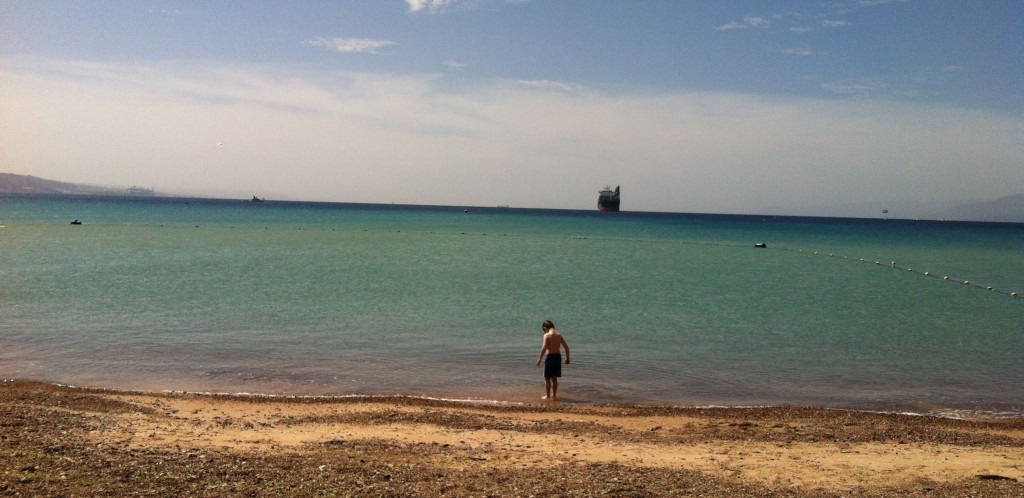 As mentioned previously, cleaning for Pesach is a serious job, one we were not used to because we usually go away for the holiday. Even in this relatively small apartment, we had our hands full. The job was further complicated by the fact that someone in the family had the bright idea that the week before Pesach was the ideal time for a 3-day trip to Eilat.
As mentioned previously, cleaning for Pesach is a serious job, one we were not used to because we usually go away for the holiday. Even in this relatively small apartment, we had our hands full. The job was further complicated by the fact that someone in the family had the bright idea that the week before Pesach was the ideal time for a 3-day trip to Eilat.

